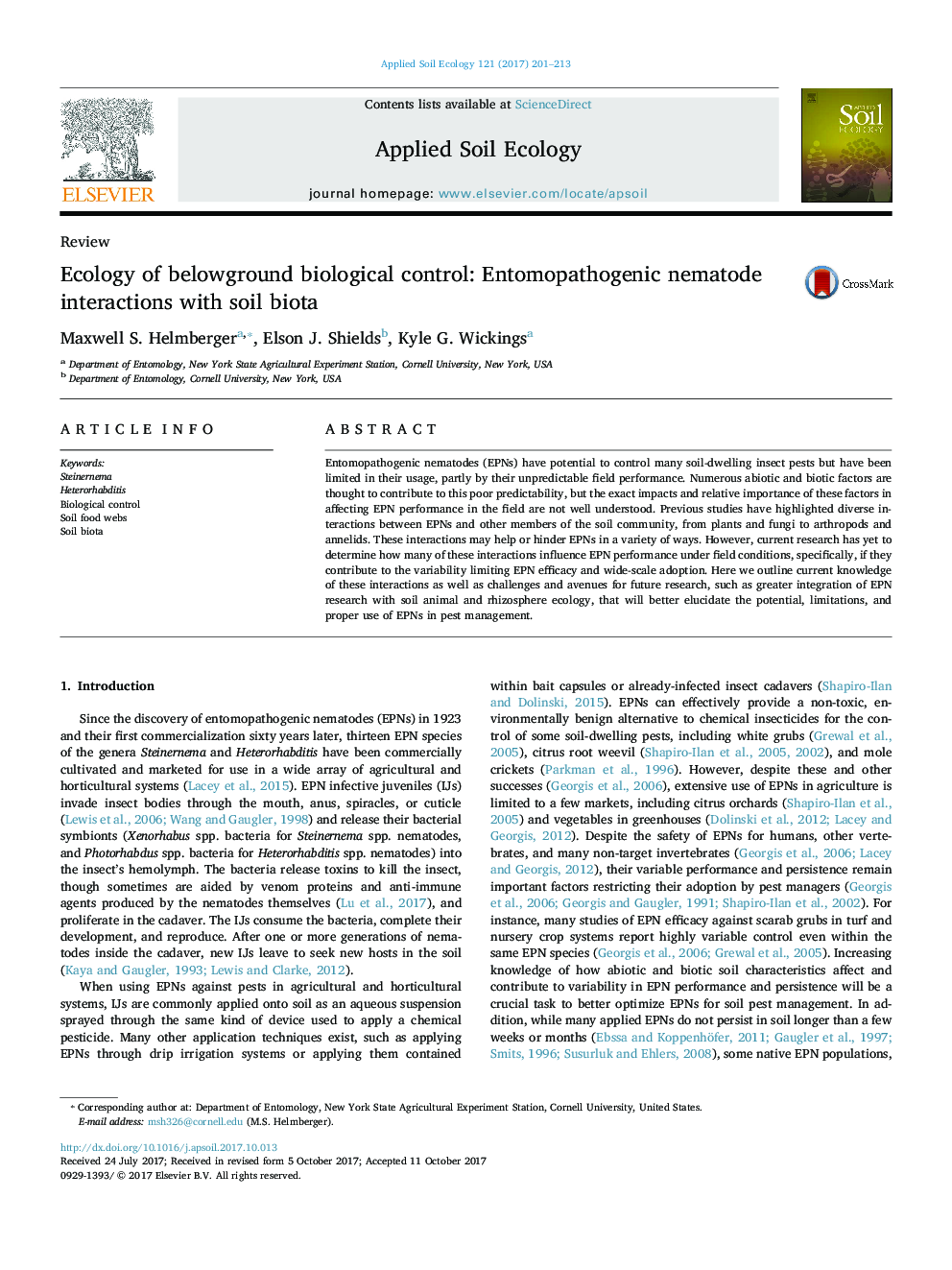| Article ID | Journal | Published Year | Pages | File Type |
|---|---|---|---|---|
| 5742562 | Applied Soil Ecology | 2017 | 13 Pages |
Abstract
Entomopathogenic nematodes (EPNs) have potential to control many soil-dwelling insect pests but have been limited in their usage, partly by their unpredictable field performance. Numerous abiotic and biotic factors are thought to contribute to this poor predictability, but the exact impacts and relative importance of these factors in affecting EPN performance in the field are not well understood. Previous studies have highlighted diverse interactions between EPNs and other members of the soil community, from plants and fungi to arthropods and annelids. These interactions may help or hinder EPNs in a variety of ways. However, current research has yet to determine how many of these interactions influence EPN performance under field conditions, specifically, if they contribute to the variability limiting EPN efficacy and wide-scale adoption. Here we outline current knowledge of these interactions as well as challenges and avenues for future research, such as greater integration of EPN research with soil animal and rhizosphere ecology, that will better elucidate the potential, limitations, and proper use of EPNs in pest management.
Related Topics
Life Sciences
Agricultural and Biological Sciences
Ecology, Evolution, Behavior and Systematics
Authors
Maxwell S. Helmberger, Elson J. Shields, Kyle G. Wickings,
